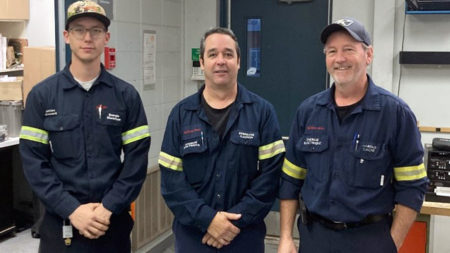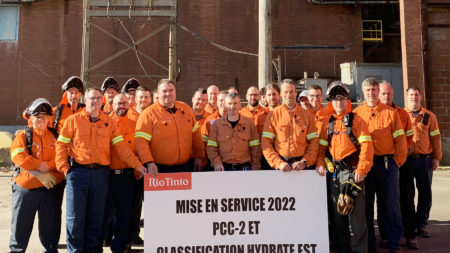The Implementation of a Community of Practice Is Paying Off

Online Video Conference Interview Meeting. Conferencing Webinar
Last July, Sylvain Beaulieu, Coordinator at Agile Demande Shaping, and Charles Larouche, Superintendent, Smelting Applications Operations at IS&T, set up a community of practice. Since then, they have been remotely training IT staff for the smelting and casting processes. The community’s knowledge has been continually expanding during this time.
The community of practice, which is divided into two groups (smelting and casting), currently consists of about fifty people working directly or indirectly in information technology, and the community keeps growing. “There are people from operations, project, industry 4.0 and other business areas,” said Sylvain Beaulieu.
In recent years, staff turnover has resulted in the loss of certain technical skills among IT staff for the smelting and casting sectors. The community of practice is being implemented to secure and increase the talent pool, while maximising knowledge and thereby ensuring the sustainability of teams and projects. It can be a challenge to find talent with the current labour shortage.
IS&T staff can better master Rio Tinto’s business areas and intervene when needed, even remotely. This is the case with Naouel Ammam, who works in Shawinigan.
“I was not familiar with the sector where my client’s casthouse was located,” she said. “I took the time to view two meetings at the casthouse. This enabled me to understand the environment I was dealing with. During a one-hour meeting with my client, my questions were focused on the problem at hand. We did good work in a short amount of time.”
Learning the Language
In addition to reducing the barriers faced by multi-domain teams, the community of practice promotes coaching and the inclusion of IS&T staff in projects through knowledge sharing.
“Our systems have fairly steep learning curves because the domain is complex and there’s a lot to know,” said Charles Larouche. “It’s a challenge to integrate new staff effectively. The community allows us to increase knowledge at the functional level.”
According to Sylvain Beaulieu and Charles Larouche, the community of practice helps harmonise the language between professions. “The sooner people get on board, the faster they can master the language and gain a better general understanding of what is happening in the field,” said Beaulieu.
With the rapid pace of technological innovation, implementing a community of practice allows us to keep our knowledge up to date while remaining at the cutting edge.
Each session is recorded so that it can be viewed later. Forty or so recordings are available to date. Anyone interested in joining the community of practice is encouraged to contact Sylvain Beaulieu or Charles Larouche.


